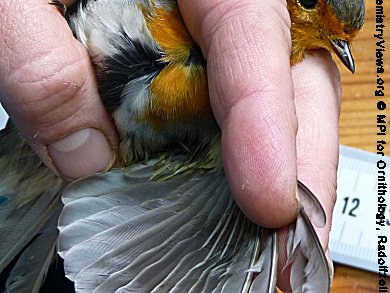During migration, birds navigate using both a genetically inherited sense of direction and a magnetic sense that enables them to use the Earth’s magnetic field lines to work out their location. The strength of this magnetic field varies from the poles to the equator, thus providing information as to where exactly a bird is at a specific moment in time. It was previously unclear whether they also used their experience to find the way to their destination.
A team of scientists lead by Richard Holland, Max Planck Institute for Ornithology, Radolfzell, Germany, exposed robins (Erithacus rubecula) on a migration stopover to a strong magnetic pulse. This temporarily disrupted their magnetic sense. As a result, the orientation of birds with prior migratory experience became less precise. By contrast, the precision of departure direction in juvenile birds, which were migrating for the first time, was not affected.
The location of the receptor for the magnetic information is still unclear. It has been proposed that the birds have ferrimagnetic particles in their beaks; others suggest systems in the eye or in the balance apparatus of the ear.
Image: ©: Max Planck Institute for Ornithology, Radolfzell, Germany
- Max Planck Gesellschaft, Munich, Germany




